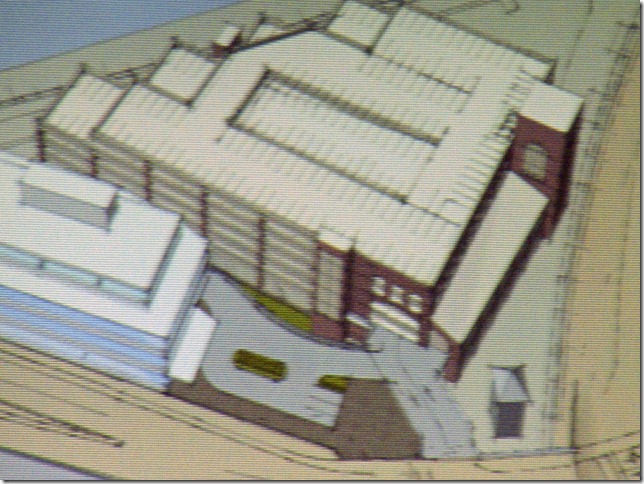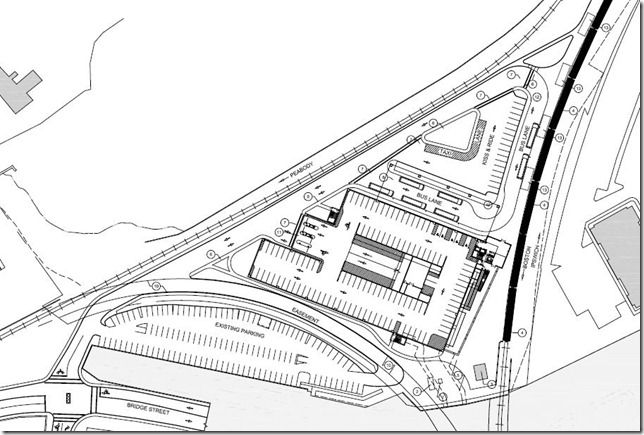The MBTA held its meeting on the 30% Design Phase of the Salem Depot project last Tuesday night.
I wouldn’t characterize the opinions as “mixed”; there were a lot of helpful suggestions and not a lot of ranting as one can often hear at other public meetings. I thought Bill Luster’s comment was very thoughtful,
Bill Luster, a former Salem city planner, reminded MBTA officials to heed a local mantra — "in Salem, design matters." He suggested they put as much brick and granite on the garage as possible.
But for the most part, the particular appearance details are not my dog in the fight. This is what I thought was important, and what I will send to the MBTA, the mayor’s office and my chairman of the Disabilities Commission:
First, I was gratified and surprised to hear that the T decided on the full-height platform option. Last I’d heard, a half-full-height, half-ground-level platform was being proposed in the original design documents.
A full-height platform is the right thing to do for a busy station like ours.
Second, I am focused on the Bridge St. pedestrian entrance like a hawk. I use this entrance nearly every day. I was hoping for more details on the construction of this important vehicle ramp and pedestrian entryway.
I realize some still want a footbridge or a tunnel in that area. I’ve been in and around Boston’s numerous footbridges, enough to know that one cannot put in such a bridge without changing the local pedestrian environment dramatically. Many footbridges (the one over Huntington Ave. to Copley Place, for example) further isolate pedestrians and make their immediate area unfriendly. So I wouldn’t advocate for this—it may well make things worse.
I also remind the T that the waiting area is still an important part of the project that many of the riders will be close to every day, whether they mean to or not.
The current canopies, which are not continuous, should be torn down and replaced with a continuous canopy.
As well, recall what I’ve said before about electronic signage: We must see an electronic, easily read and continually updated train display. I also note that the T has started a pilot project to provide next-bus information. One hopes that by 2011, it will be expanded to include Salem’s service area.
The MBTA heard our comments, also, about security and safety. These are ever important, not only for people with disabilities but for all those who use the station at any hour of the day.
Lastly, I’m responding to some at the meeting who don’t want the proposed ramp, who are concerned about “walking further than they have to.”
I can understand being at the top of the steps to a train station and seeing your train leave. It’s happened before and will again.
However, Salem would not be unique in this. There are many stations in the T system that require a long walk to the exit, or to another train, depending on the location. On the Red Line, South Station and Downtown Crossing are notorious mazes, particularly to and from the Silver Line. On the Blue Line, if your car is parked west of the Wonderland platform, you need to go up and down stairs, quite a few of them, before you can even hit the turnstiles to leave. So don’t think Salem is put upon in particular.
I absolutely hate the current stairs. I fell down them once, and while physically long since recovered, have never stopped my hate for them in the least. There is no way I would tolerate a design that had me go down the existing stairs and across a roadway at ground level before I got to my bus stop. No.
Some at the meeting, and in the filed comments talked about the “few disabled people” who use and need a ramp compared to the “many”. This isn’t the most fair comparison.
A station like Salem’s is used by many people, big surprise there. But it is also used by visitors. Many visitors with disabilities have told us at the Commission on Disabilities how easily they were able to get around and how much they enjoyed their time in the city. About 20% of Salem residents have a disability—1 in 5 of us. We don’t know how many of these are mobility impaired, but we do know it is more than a mere “few”.
Accessibility on the T only works well when all the stations are accessible. Many disabled people travel to Salem with friends and family. If a disabled person has problems at Salem, he or she likely won’t come back—and nor will their friends! In a tourist-centered city like ours, that’s been unacceptable for quite some time.
I’m encouraged by the progress so far and we’re looking forward to the next phase.
Comments are being accepted through March 5th. The comment deadline is this Friday, March 12th.
Contact Tom Rovero, MBTA Design and Construction, 500 The Arborway, Jamaica Plain, MA 02130
or Karen Despirito, Senior Community Affairs Coordinator, (617)-222-6513


